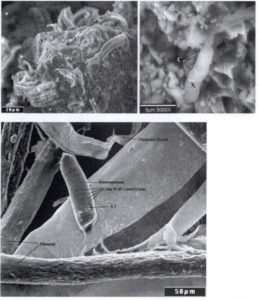 Last week I wrote about a recent article claiming evidence for panspermia (the idea that life had limited origins and then seeded itself throughout the galaxy), and the underlying idea of panspermia itself. I concluded that the new paper provided no compelling evidence, and panspermia, while not impossible, is a fringe hypothesis with no credible supporting evidence.
Last week I wrote about a recent article claiming evidence for panspermia (the idea that life had limited origins and then seeded itself throughout the galaxy), and the underlying idea of panspermia itself. I concluded that the new paper provided no compelling evidence, and panspermia, while not impossible, is a fringe hypothesis with no credible supporting evidence.
In response one of the co-authors of the paper (Ted Steele) wrote me an e-mail, attempting to defend the paper. I welcome the opportunity to engage in a dialogue about any topic I blog about, and so here is my response. Here is the e-mail in full:
Dear Steven:
I can see you have got quite emotional (attached) – and I am sure you are therefore not thinking straight. I tried posting this reply to your Blog comment but for technical reasons( I think ) I was excluded. So I decided to email you directly and share my response with some of your academic colleagues.
I suggest you re-read our paper carefully as you read this note. See https://doi.org/10.1016/j.pbiomolbio.2018.03.004
I am a molecular immunologist and evolutionist of 50 years standing. I am also the lead author of this paper on the “Cause of the Cambrian Explosion – Terrestrial or Cosmic? ” I do not publish scientific trivia, and apart from key books the main body of my work is published in peer reviewed journals – check me on PubMed searching “Steele EJ”. Many of my PDFs are also at my academia.edu site (below). My main field is the study of the RNA and DNA editing mechanisms in the somatic hypermutation and germline evolution of antibody variable genes – however I am very interested in pragmatically evaluating the evidence consistent with or predicted by the Hoyle-Wickramasinghe Panspermia explanatory paradigm.
I have spent 10 years or more poring over and thinking about all the multifactorial evidence and all the explanations and criticisms. I expect serious critics to do what I have done – confront all the “extraordinary ” evidence in conflict with the terrestrial paradigm. Most of my co-authors have done that. Skeptics must do this – confront and evaluate the evidence and the primary literature. Here some examples from our paper, which are paradigm shifting (that is, pure nonsense under the terrestrial neo-Darwinism paradigm).
We now have a set of extraordinary facts to explain. The usual skeptical response in these situations is that “Extraordinary Explanations require Extraordinary Evidence’. The situation now is the reverse. Extraordinary, and multifactorial evidence exists now on Earth and its immediate environs. So now we must provide an “Extraordinary” explanation that fits all these facts and makes sense of them – this has been the aim of Science since time immemorial.
Four extraordinary set of biological facts are speaking for themselves:
• Eukaryotic fossils in meteorites > 4.5 billion years old ( e.g. Murchison)
• Interstellar dust Infra red extinction spectrum = infra red extinction spectrum of freeze dried E. coli (this is the most incredible scientific result I have ever seen, see Fig 1 in our paper)
• Bacteria in the cosmic dust on the external surface of the International Space Station
• Tardigrades
I have not added a list of other data, including space hardy biological data, Mars data, nor the Octopus RNA editing data, because I do not need to – four , quite unrelated, data sets are enough for biological significance. ( Statistical significance does not enter the picture). The skeptic and traditional Astrophysicist now needs to provide a convincing explanation of these data sets that avoids Panspermia.
I am a pragmatic Popperian – I deal in hard facts that require a unifying explanation.
Yours
Ted Steele
Continue Reading »

 As an American it’s very easy to look at issues from a narrow American-centric view (we have a well-earned reputation for this). I am often reminded of this by my many international SGU listeners, and I have had to discipline myself to keep this in mind.
As an American it’s very easy to look at issues from a narrow American-centric view (we have a well-earned reputation for this). I am often reminded of this by my many international SGU listeners, and I have had to discipline myself to keep this in mind. Last week I wrote
Last week I wrote There is a lot to be horrified about regarding the alternative medicine (CAM) industry. The industry largely trades in fraud and misinformation at the expense of the public’s health. But I often find myself most dismayed by what the industry says about the relationship between humans and reality.
There is a lot to be horrified about regarding the alternative medicine (CAM) industry. The industry largely trades in fraud and misinformation at the expense of the public’s health. But I often find myself most dismayed by what the industry says about the relationship between humans and reality.






